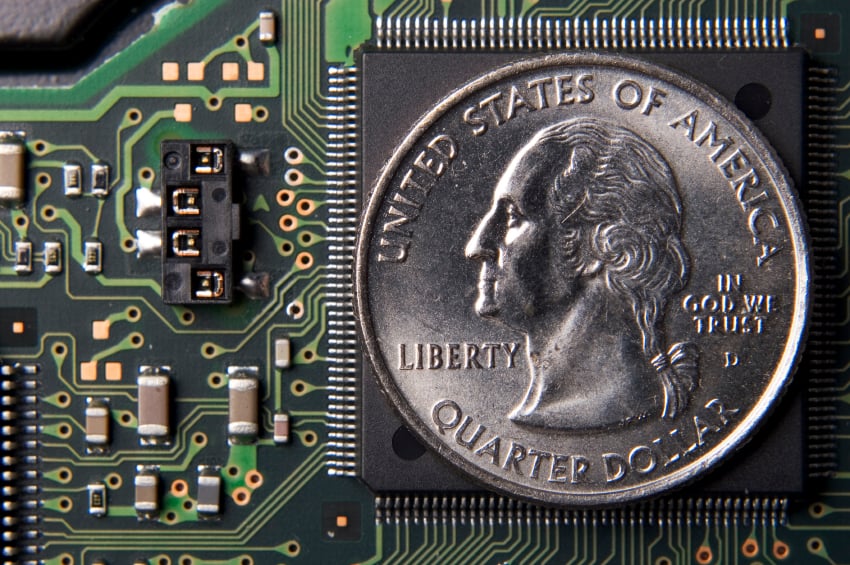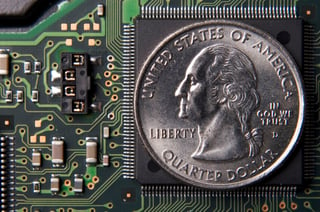13.02.2021
How Are Electronic Components Priced?


A common industry myth is large EMS companies get the best component prices, a myth proclaimed by...large EMS companies. The truth is much different and is rooted in the actual way semiconductor companies control the the prices of their products. In the end, relying on any EMS company to drive your component costs is a bad idea no top tier OEM embraces.
So what matters most if not the size of your EMS supplier? Three factor dominate: your geographic location, your total spend in a given commodity, and the specific volume being procured. Let's take a look at how the pricing system works in detail.
How Distribution Works
Distributors can be "authorized" or "unauthorized". Unauthorized distributors are what we broadly refer to as brokers, or the gray market. Authorized distributors (Avnet and Arrow for example) have specific contracts in place to represent their suppliers. Two privileges in particular distinguish authorized distribution: stock rotation, and "ship from stock and debit" system or "debit" for short. Stock rotation allows distributors to return inventory that isn't moving. The debit system is the key to understanding component pricing.
There are three types of price for electronic components:
1. Book Price
2. Broken Price
3. Direct Price
Book Price - This is the price you see online at distributors like DigiKey, Arrow, and Avnet. It is usually separated into volume levels, i.e. 1-50, 50-100, 100-500, etc. In almost all cases this price reflects the suggested price published by the manufacturer. In reality the distributor is paying a set cost to the manufacturer (the "book" cost) and the price you see online reflects variance in the distributor's profit margin. The manufacturer can only suggest the resale; the distributor is free to adjust the margin however they see fit. The distributor may have a preferred price model for you; this means they are adjusting their margin especially for you based on the standard or "book" cost they pay to the manufacturer.
Broken Price - In competitive bids the manufacturer might agree to "break" the book cost paid by the distributor. Since the distributor already purchased (usually) the inventory at the manufacturer's book cost, the manufacturer issues an accounting adjustment called a "debit" so the distributor can capture the special lower cost. This system is called "ship from stock and debit," or "debit" for short.
For example, let's say a distributor has 1000 pieces of a widget at a book cost of $1.00. The online prices you see might be $1.50 for 1-10, $1.40 for 10-25, and $1.30 for 25 and up. If XYZ Inc. requests a bid from the distributor for 500 widgets, the distributor may call the widget manufacturer and ask if they would like to break price for 500 units to XYZ Inc. The manufacturer agrees and issues a "debit" to the distributor to make the cost of 500 widgets .50. The distributor applies margin to the .50 and sells the widget for .66.
This is how most production pricing works. Note that the debit is specific to the customer and that it is controlled by the manufacturer. With few exceptions the manufacturer will quote the same broken cost for any given opportunity to each distributor that requests it. This system is core to how authorized distribution works. Remember, the two most fundamental distinctions between authorized and unauthorized distributors are access to "ship from stock and debit" and the privilege to exchange non-moving inventory ("stock rotation").
Direct Price - This is the price quoted direct from the manufacturer to the OEM (no distributor) in situations where the manufacturer has agreed to sell direct to the OEM.
As a final thought, component manufacturers tend to base their price decisions on the prevailing market (supply/demand) for the particular component being quoted, and distributors tend to base their price decisions (how much margin to apply) based on the value of their relationship with the OEM and/or the contract manufacturer.
For a more in depth description of component pricing, read our article in EBOnline, Shedding Light on Electronic Component Pricing.
This post originally appeared on the DigiSource Blog


